Frost Protection - UTL Repository
Frost Protection - UTL Repository
Frost Protection - UTL Repository
Create successful ePaper yourself
Turn your PDF publications into a flip-book with our unique Google optimized e-Paper software.
PASSIVE PROTECTION METHODS<br />
TABLE 6.2<br />
Number of days when the mowing or herbicide spray treatments had warmer,<br />
about the same, or colder minimum temperature than the cultivation treatment<br />
in grape vineyards from March through May for 1987 through 1989<br />
YEAR MOWING SPRAYING<br />
warmer same colder warmer same colder<br />
1987<br />
1988<br />
1989<br />
7<br />
13<br />
4<br />
39<br />
44<br />
32<br />
18<br />
22<br />
7<br />
24<br />
58<br />
17<br />
21<br />
21<br />
23<br />
4<br />
1<br />
2<br />
orchards and vineyards is definitely known to be beneficial. There are many<br />
examples of growers experiencing severe losses in crops with cover crops while<br />
there were minimal losses in the same crop without a cover crop.<br />
In the Donaldson et al. (1993) experiment, differences in minimum temperature<br />
were attributed to the fact that the mown grass remained on the vineyard floor<br />
and blocked sunlight from striking the soil surface and that reduced thermal<br />
conduction into the cultivated soil. Cultivation creates air spaces that insulate<br />
against heat transfer and increase evaporation, which lowers soil water content<br />
and reduces heat capacity. However, the soil was not compacted after cultivation<br />
and this might have improved protection. The herbicide-treated soils were cleaner<br />
and more firm and moist than the other two treatments.<br />
Tall cover crops (i.e. grasses and weeds) insulate the soil from heat transfer and<br />
may hinder cold air drainage, resulting in more frost damage. However, taller<br />
cover crops provide a greater freezing surface area for under-tree sprinkler frost<br />
protection systems and therefore could be beneficial for that method (Evans,<br />
2000). Research in Bologna, Italy (Anconelli et al., 2002) also showed that a tall<br />
cover crop is beneficial when using under-tree sprinklers. Their hypothesis is<br />
that the temperature of the wetted surface is maintained at near 0 °C and raising<br />
the surface height by growing a cover crop will raise the 0 °C level. Although<br />
protection may be enhanced by the presence of the tall cover crop, one is also<br />
more likely to need an active protection method if there is a cover crop.<br />
Large variations in ice-nucleation active (INA) bacteria concentrations on<br />
different crops have been observed. In some cases, the concentrations are low<br />
(e.g. citrus and grapevines). However, the concentration of INA bacteria on<br />
grasses and weeds and on cereal crops is typically high. Therefore, presence of<br />
cover crops within an orchard or vineyard, or cereal crops near to a sensitive<br />
crop, increases concentrations of INA bacteria and frost potential.<br />
135



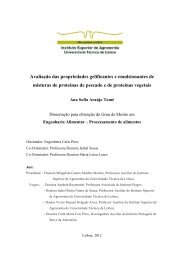
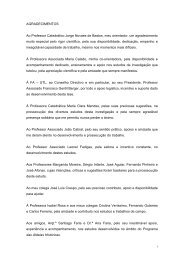
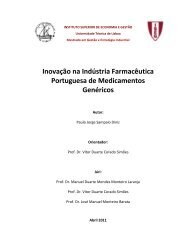
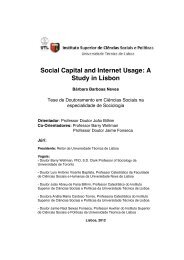
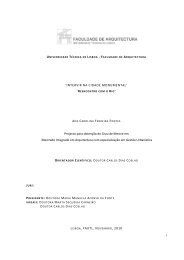
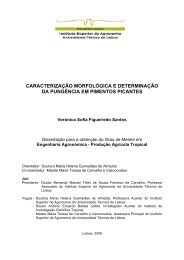

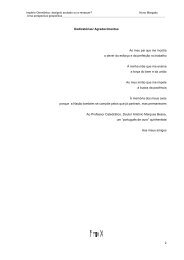

![Tese - Es..[1].pdf - UTL Repository - Universidade Técnica de Lisboa](https://img.yumpu.com/25707135/1/184x260/tese-es1pdf-utl-repository-universidade-taccnica-de-lisboa.jpg?quality=85)


